We've got the Il-10, sure, but what about some jet-powered ground attack power for the Soviets? Well, I believe we have just the thing for that.
Seeing the success of the Arado Ar-234, the Soviets had a desire to replicate its capabilities with their own design. Myasishchev was up to the challenge with their RB-17 and DSB-17 designs, using an unorthodox "stacked" engine layout. This was Russia's first jet bomber design, and the concept had features that would eventually be applied to the Il-28.
Once again, here's what seems to be a roughly translated wall of information about the history of the design, taken from
https://www.globalsecurity.org/military/world/russia/rb-17.htmThe very first Soviet turbojet bomber was designed at OKB-482 under the leadership of the talented aircraft designer V.M.Myasishchev. The first surveys on it began in the course of the war. As is well known, the Soviet Union at that time did not have its own fine-tuned turbojet engines. In this regard, all the first projects on the reactive theme were associated with the use of captured German products.
V.M. Myasishchev was one of the first Soviet specialists who began to study German jet aircraft. In particular, it was OKB-482 that was instructed to study the design of the captured Me-262 fighter, restore several captured samples to flight condition and assess the possibility of organizing its production. They coped with this task. V.M. Myasishchev even worked out the possibility of further modernization of the German fighter by using other equipment and lightening the design. However, the choice was then made in favor of developing their own aircraft ( Yak-15 , La-150 , MiG-9 ), but using German engines. Nevertheless, some experience by OKB-482 specialistswas received. And it was immediately used in related topics.
In addition to fighters, it was necessary to create new jet bombers. The idea of ??replacing the propulsion system with a serial piston machine was abandoned almost immediately. As a result, the design team began to develop a jet bomber with German Junkers Jumo 004 engines. It received a working index RB-17.
Due to certain circumstances, the history of this project was very short. In fact, it all ended with the preparation of the draft design. Closing this project became a highly controversial decision. Compared to the development of a fighter, the creation of a jet bomber was a somewhat more complex technical task. The available engines had low thrust. In this regard, in order to achieve the specified characteristics, it was required to work out the most optimal variant of the layout scheme, which provided for the installation of several engines at once. As a result, OKB-482 settled on an arrangement where four engines were located in pairs under the wing consoles. While there was a study of new projects (both fighters and bombers), in the OKB V. Ya. Klimovand in the OKB ND Kuznetsov were engaged in the introduction into production of captured German turbojet engines (under the names RD-10 and RD-20, respectively). Their use could make it possible to bring the maximum speed of aircraft to about 800 km/h.
Turbojet engine RD-10 was a copy of the German turbojet engine Junkers Jumo-004B-1. The design features of this engine include the presence of six direct-flow combustion chambers, a single-stage axial turbine and an eight-stage axial compressor. It was produced in a fairly large series until 1953 and was used on many of the first jet aircraft, both experimental (Su-9, La-150) and serial (Yak-15, Yak-17).
During 1945, there was a preliminary design and design of individual structural elements (for example, the fuselage, wing). The aircraft under development received the RB-17 index . TsAGI specialists provided some assistance in creating the wing. By the end of the year, the preliminary design was completed and submitted for consideration to the NKAP. Several modifications of the aircraft were assumed - this is a front-line reconnaissance aircraft and even a long-range fighter. In general, the aircraft suited the customer. It is noted that work had begun on the construction of some models.
Front-line bomber RB-17 was supposed to be an all-metal cantilever high-wing aircraft. The fuselage had an elongated cylindrical shape and was divided into three main parts. In the front part there was a pressurized cabin for two crew members, one of the fuel tanks and a compartment where the front landing gear was to be removed in flight. The central part housed the main fuel tanks, bomb bay, compartments for cleaning the main landing gear and other equipment. As for the bomb bay, it could hold bombs of up to 3000 kg caliber. The entire bomb load could only be on the internal sling. Various options for placing bombs of different calibers were worked out. In the rear of the fuselage there was a pressurized cabin for one crew member with a stern rifle installation. The power frame of the fuselage was supposed to consist of a set of frames.
The three-spar wing was trapezoidal. Vertical and horizontal tail - classic. Retractable chassis, tricycle. The size of the front paired wheels was 650 x 200 mm, and the size of the rear reinforced wheels was 1200 x 450 mm. The landing gear was removed and released using a hydraulic system. As noted above, the power plant was chosen, consisting of four RD-10 turbojet engines., which were placed in pairs under the wing consoles. It is noted that the designers have laid the possibility of a quick replacement of the type of engines used. The fuel system consisted of seven fuel tanks with a total capacity of 4250 kg. If necessary, it was possible to install additional fuel tanks. The plane was to take off with the help of starting powder boosters. The RB-17 bomber was to receive the most modern radio navigation equipment at that time. The installation of the TON-3 radar and the SCh -3 radio identifier was envisaged . Internal communication was to be carried out through the SPU-F intercom.
Airplane intercom SPU-F was designed for telephone communication and sound signaling on two, three and four-seater aircraft. The standard kit consisted of an amplifier with phono-ringing, an umformer with a filter, subscriber sets, connecting blocks and shielded cables. The SPU-F was powered from the on-board network with a voltage of 26 V. It was installed on various types of aircraft - Pe-8, Li-2, Tu-2, Il-4, Er-2, etc.
The navigation equipment included a remote magnetic compass and a radio altimeter. When modifying the vehicle into a photo reconnaissance version, it was supposed to install aerial cameras such as AFA-33/20 , AFA-33/75 and others. The defensive armament consisted of a stationary unit located in the front of the fuselage with an NS-23 cannon (150 rounds of ammunition) and a feed unit with 200 rounds of ammunition (for a B-20 or NS-23 cannon ).
A major reorganization of the aviation industry soon began. NKAP was transformed into MAP. Some OKBs were closed, including the design team, which was headed by V.M. Myasishchev. The corresponding decree of the Council of People 's Commissars of the USSR , number 472-191, was issued on February 26, 1946. In this regard, work on the RB-17 project was curtailed. Most of the designers and engineers were transferred to the Ilyushin Design Bureau. The developments for the current program of the RB-17 jet bomber were also transferred there, where the experimental Il-22 was soon built. In general, these were similar projects.
The RB-17 is the most commonly seen title, referring to the reconnaissance bomber variant of the design. A dedicated bomber variant with a proper bomb bay, likely titled DSB-17, was sketched out alongside it (I believe the interior view below depicts this version). The RB-17 didn't have a bomb bay and would only carry bombs on the inner wings.
Once again, images are courtesy of the passionate researchers at
https://www.secretprojects.co.uk/threads/myasishchev-rb-17.10571/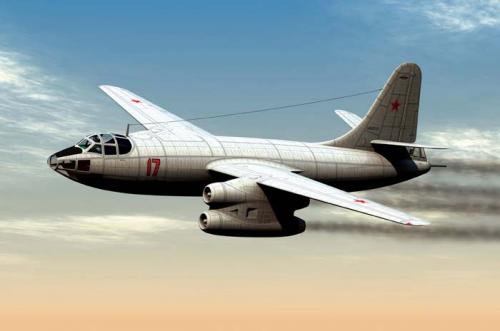
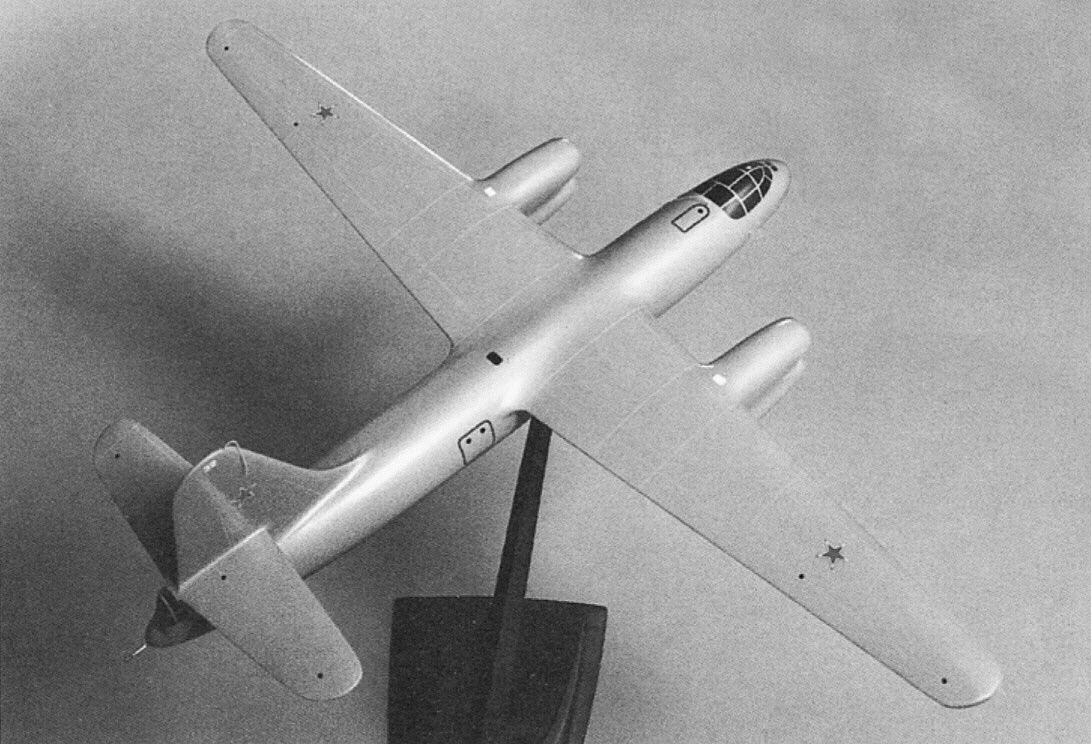
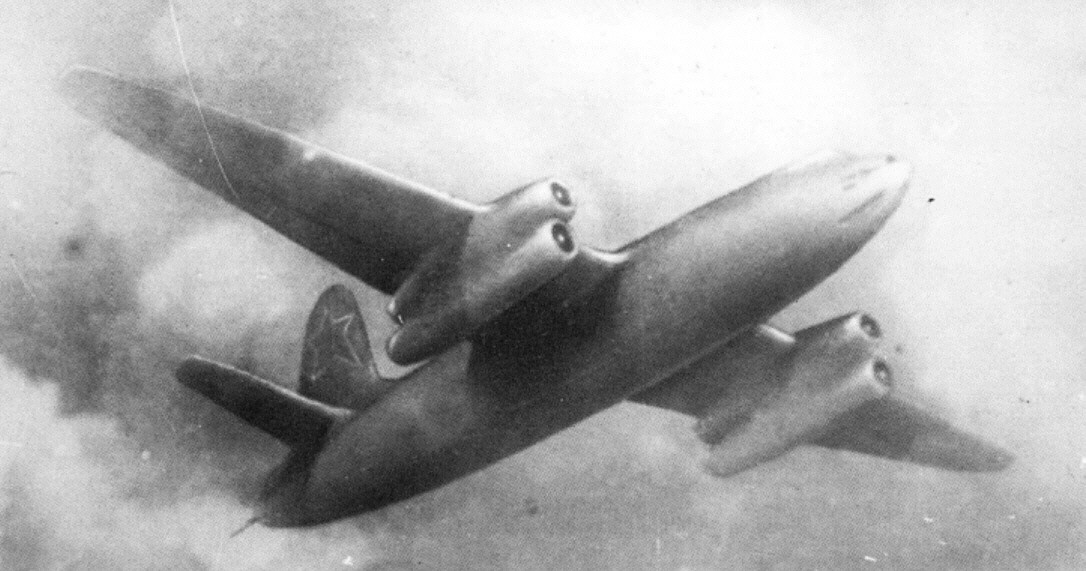
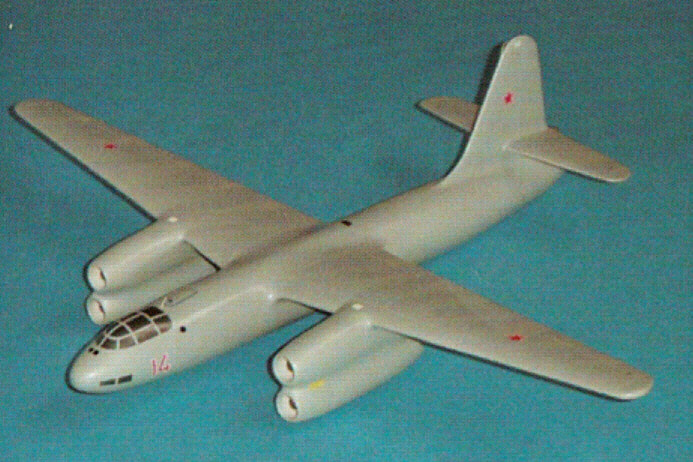
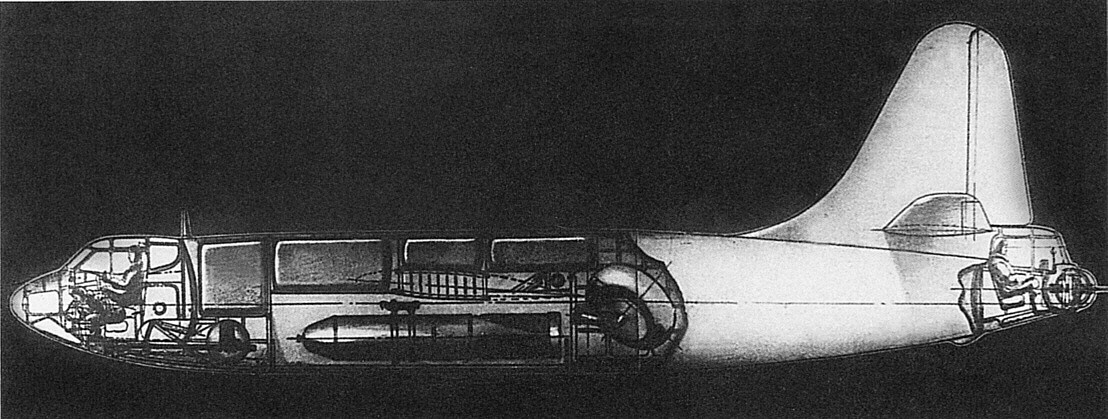
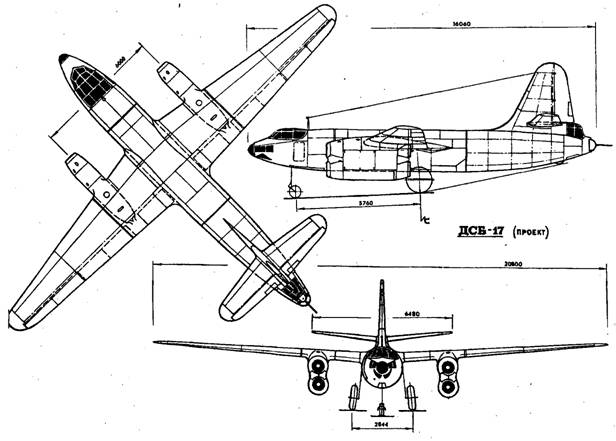
This last image is apparently a second version of the DSB-17 design with two larger engines. There's practically no information about it that I can find.
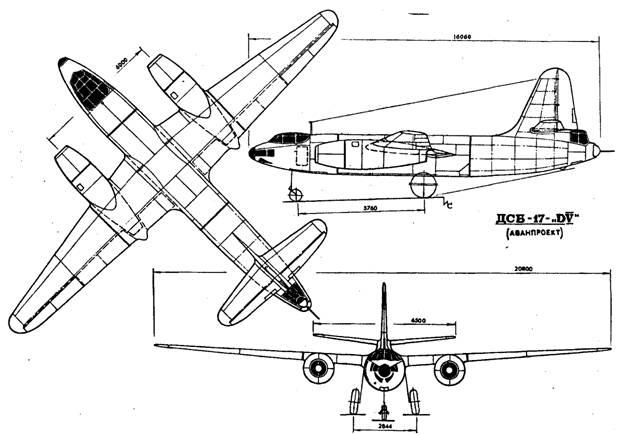
Wargaming was the first to explore gameplay of this aircraft in World of Warplanes, although the variant depicted is actually the DSB-17 incorrectly titled the RB-17:
An IDD-17 long-range fighter variant was also proposed, but there are no known images of this version.
 Author
Topic: Myasishchev RB-17 and DSB-17 - Some '46 Soviet ground attack power (Read 915 times)
Author
Topic: Myasishchev RB-17 and DSB-17 - Some '46 Soviet ground attack power (Read 915 times)


